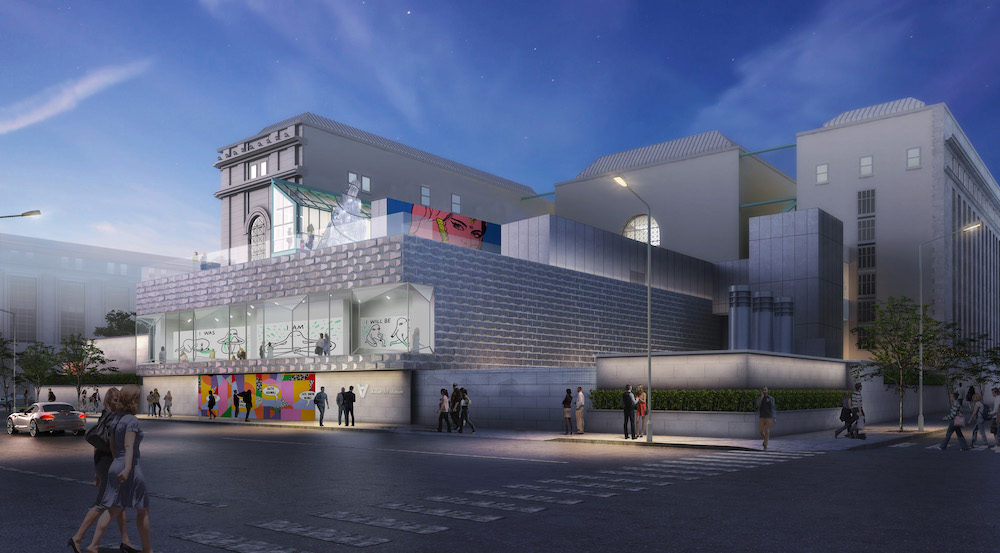Like many of us, I have spent much of the past nine months or so huddled in front of my computer. One day, an email arrived that really caught my eye. It was from 8-bridges—an organization I had never heard of—inviting me to save the date for a panel discussion featuring the directors of three cutting-edge Bay Area arts venues: Julie Rodrigues Widholm, the new director of UC Berkeley Art Museum and Pacific Film Archive (BAMPFA), Alison Gass, who has assumed leadership at the Institute of Contemporary Art San José (ICA) and Jay Xu, Director of the Asian Art Museum since 2008.
With these museums unable to open their doors to visitors these days, all have had to become very creative. Xu referred to “turning the museum inside out” when describing a trio of murals visible from the street, all newly created by Asian American feminist artists. Gass turned the entire exterior of the ICA into an exhibition space with a message aimed at getting out the vote. And Widholm is excited by the potential of a large outdoor video-projection screen, recently used to display photographs by Catherine Opie. This was the first in a series of three terrific panel talks, each featuring a trio of diverse museum directors.
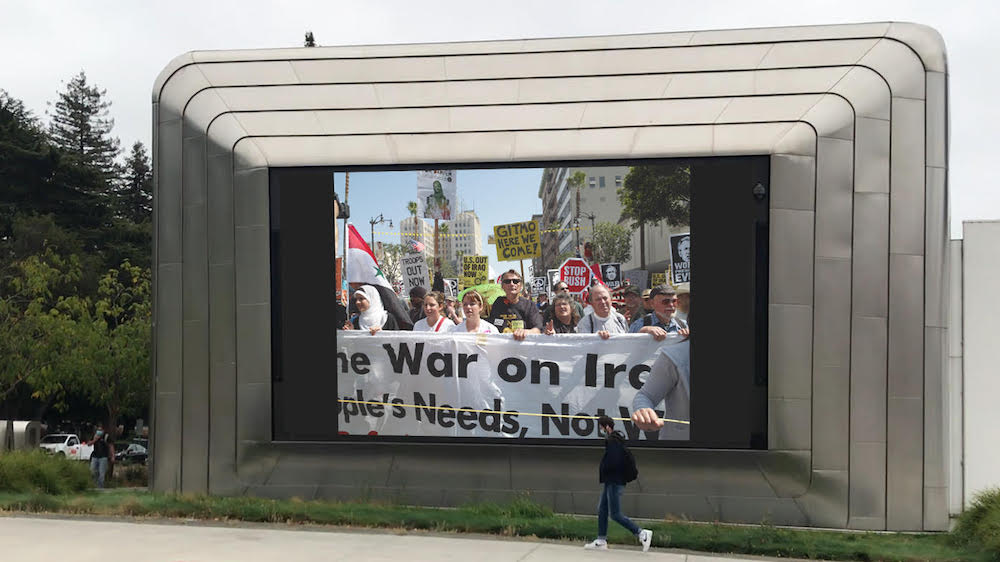
Catherine Opie, Political Landscapes displayed on BAMPFA’s outdoor screen, 2020. Photo by Dave Taylor, courtesy of BAMPFA.
So what is 8-bridges, the driving force behind the panel discussion? Named for the eight bridges connecting the Bay Area, it is the brainchild of a group of SF-based art leaders whose casual conversations evolved into a new online platform to increase the energy and vitality of the Bay Area arts scene in COVID times. The founding committee members are Claudia Altman-Siegel, Kelly Huang, Sophia Kinell, Micki Meng, Daphne Palmer, Chris Perez, Jessica Silverman, Elizabeth Sullivan, and Sarah Wendell Sherrill. Most of these are gallerists, running some of the best and brightest venues in SF.
I spoke with Kinell and Silverman, as well as Altman Siegel gallery Director Becky Koblick. The whole concept focuses on the idea of collaboration, and the premise that the best way to support the Bay Area art scene is by selling artwork. Kinell explained that 8-bridges evolved over “many weeks of conversations” between a group of colleagues, and involved many “minds and voices.” Koblick concurred: “Since we were unable to travel as much—which is such a huge part of our industry, to meet new artists and clients—we wanted to work together in the community to make sure we still had a voice during this time.”
Echoing the 8-bridges concept, the platform rolled out a schedule of online exhibitions by eight galleries presenting eight works each month. Another key feature of the platform is to feature an alternative space or institution each month, showcasing its mission and encouraging viewers to donate.
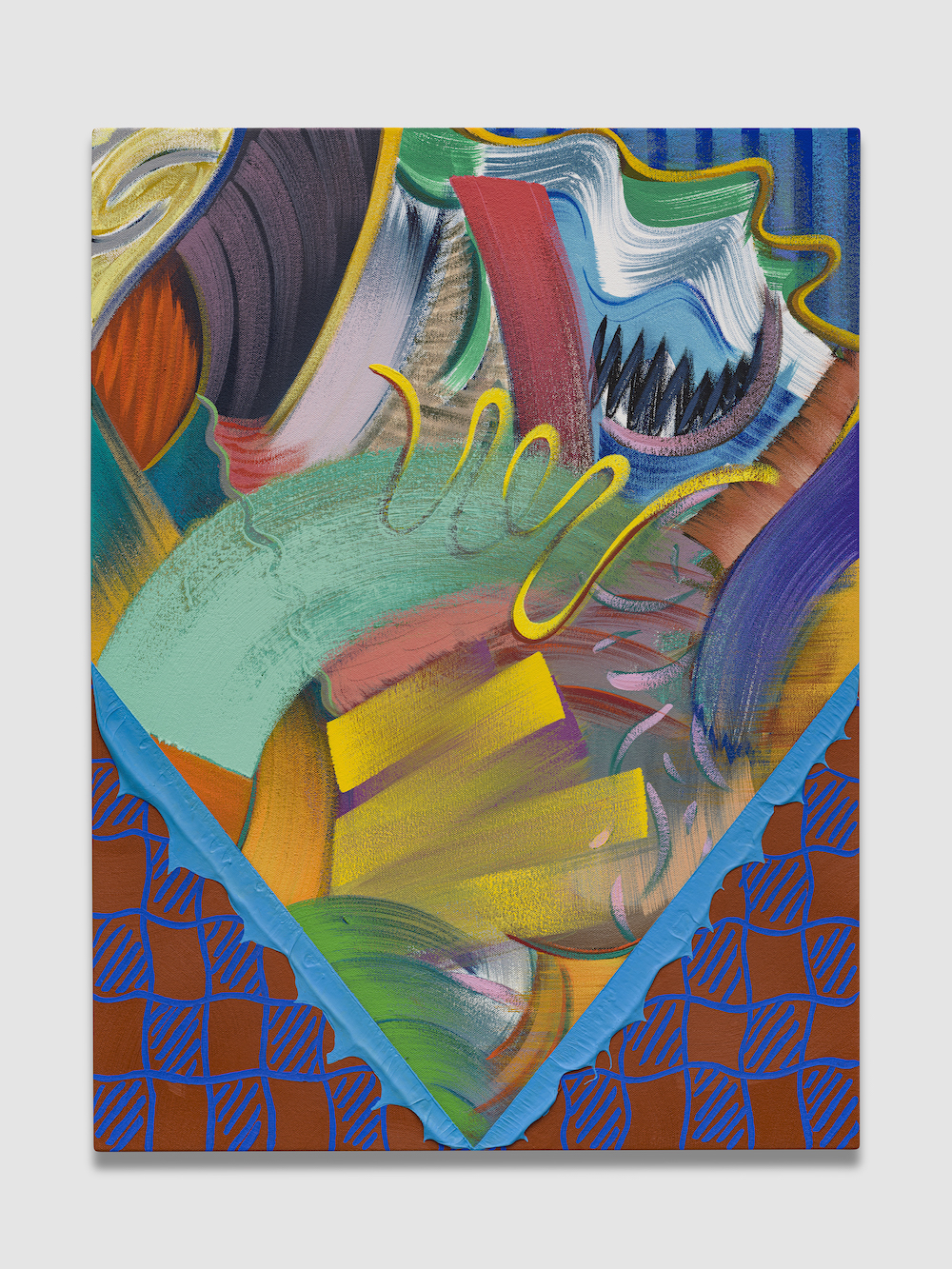
Alex Olson, Egg, 2020. Courtesy of the artist and Altman Siegel, San Francisco.
Sophia Kinell, the regional lead of the San Francisco branch of Phillips contemporary auction house, spoke with me of a recent New York auction: ”It was our best ever. We set major records for artists like Kehinde Wiley, Mickalene Thomas, Amy Sherald, Jadé Fadojutimi, and Vaughn Spann—an incredibly diverse roster of artists.“ Kinell said that “With 8-bridges, we are putting our muscle behind the institutional beneficiary. In the inaugural month of October, this was the Museum of the African Diaspora; in November, Creative Growth (Art Center), and in December an institution near and dear to my heart, the Headlands Center for the Arts in Sausalito.”
While 8-bridges is fresh to the Bay Area scene, it shares a concept implemented successfully in other locales. Similar ideas were born in Los Angeles’ GALLERYPLATFORM.LA, and in New York, where megadealer David Zwirner launched Platform: New York. These online platforms are currently extensions of the gallery system but could certainly evolve into something else, with even more potential to expand the ways we interact with art. Artists increasingly have the ability to show and potentially sell their own work online as well. The challenge lies in making the experience richer and more authentic.
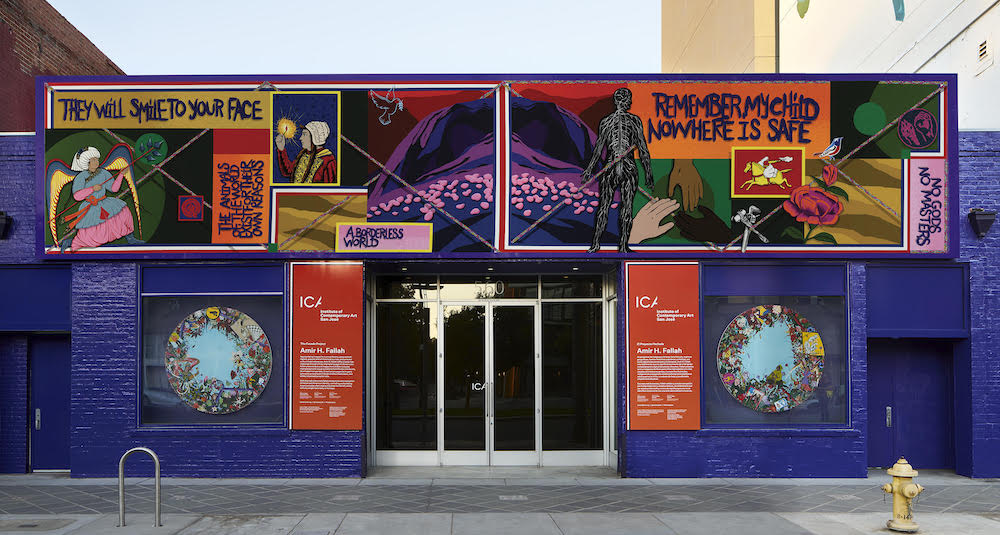
ICA San José installation view of Amir H. Fallah: The Facade Project, 2020. Photos by Impart Photography.
A theme emerging across the board in the Zoom panel talks is this shift to the virtual. When I spoke with Widholm she emphasized that at BAMPFA, “Our staff has done a brilliant job pivoting toward digital programming… primarily with our virtual cinema programs streaming cinema accompanied by panel discussions and live interaction with filmmakers and people behind the scenes.” Another recurring theme is greater engagement with the local community. Mari Robles, incoming director of the Headlands, alluded to a shift in its involvement with local artists: the former “affiliate artist” program dissolved, to be replaced by something more integrated with its internationally acclaimed resident artist program. Finally, an idea that seems particularly urgent is creating internship programs for young people, particularly for BIPOC (Black, Indigenous, People of Color) youth for whom a career in museum work might seem off the radar. Monetta White, Director of the Museum of the African Diaspora wondered aloud, “Why did it take George Floyd for us to begin having these conversations?” With the reset on our cultural institutions provided by COVID, and magnified by the racial justice movement, it’s obvious that no one really expects, or wants, to go back to “business as usual.”
A key piece not only to 8-bridges, but to the future as an arts community, is collaboration, with various parties working together to share resources and promote art. While the impetus behind the new platform is to survive the COVID crisis, it also reflects a certain zeitgeist: the need for change in the art world as a whole. As sky-rocketing rents and exorbitant art fair fees have increasingly priced the smaller brick-and-mortar galleries out of the market, for many the shutdown may be the last straw.
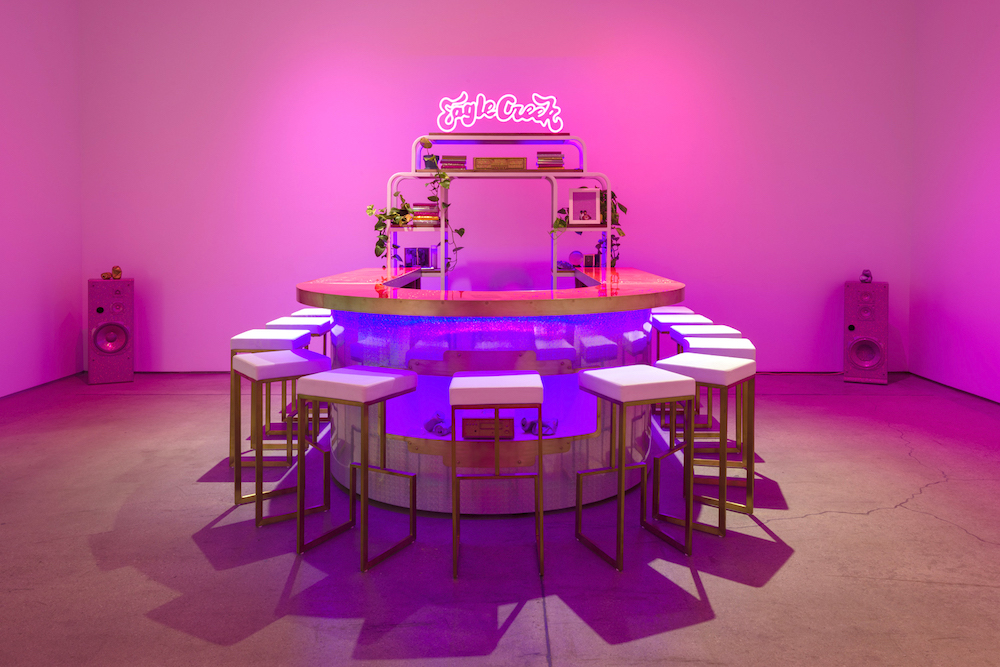
Installation View of Sadie Barnette, The New Eagle Creek Saloon, Institute of Contemporary Art, Los Angeles, 2019. Courtesy of the Artist, Charlie James Gallery, and Jessica Silverman.
So how will emerging artists bridge the gap from obscurity to recognition? It’s great to hear brainstorming on ways in which galleries and museums, even auction houses, may work hand in hand with artists, creating opportunities and bonds that had not existed. Alongside these institutional shifts, one hopes that a new spirit of cooperation, rather than competition, may arise within the broader art world. With a teeming population sharing diminishing resources, perhaps it’s time to rethink some of our longstanding assumptions about images and objects.
Will 8-bridges disappear once we are able to return to “normal”? As Jessica Silverman says, “I think it will continue. I really believe that virtual and online programming alongside the physical is going to be the new paradigm. I think that it’s here to stay.” With the reshuffling of the deck when things reopen, many changes loom ahead. Art galleries will need to adapt and evolve, and in many ways, that’s a good thing.

